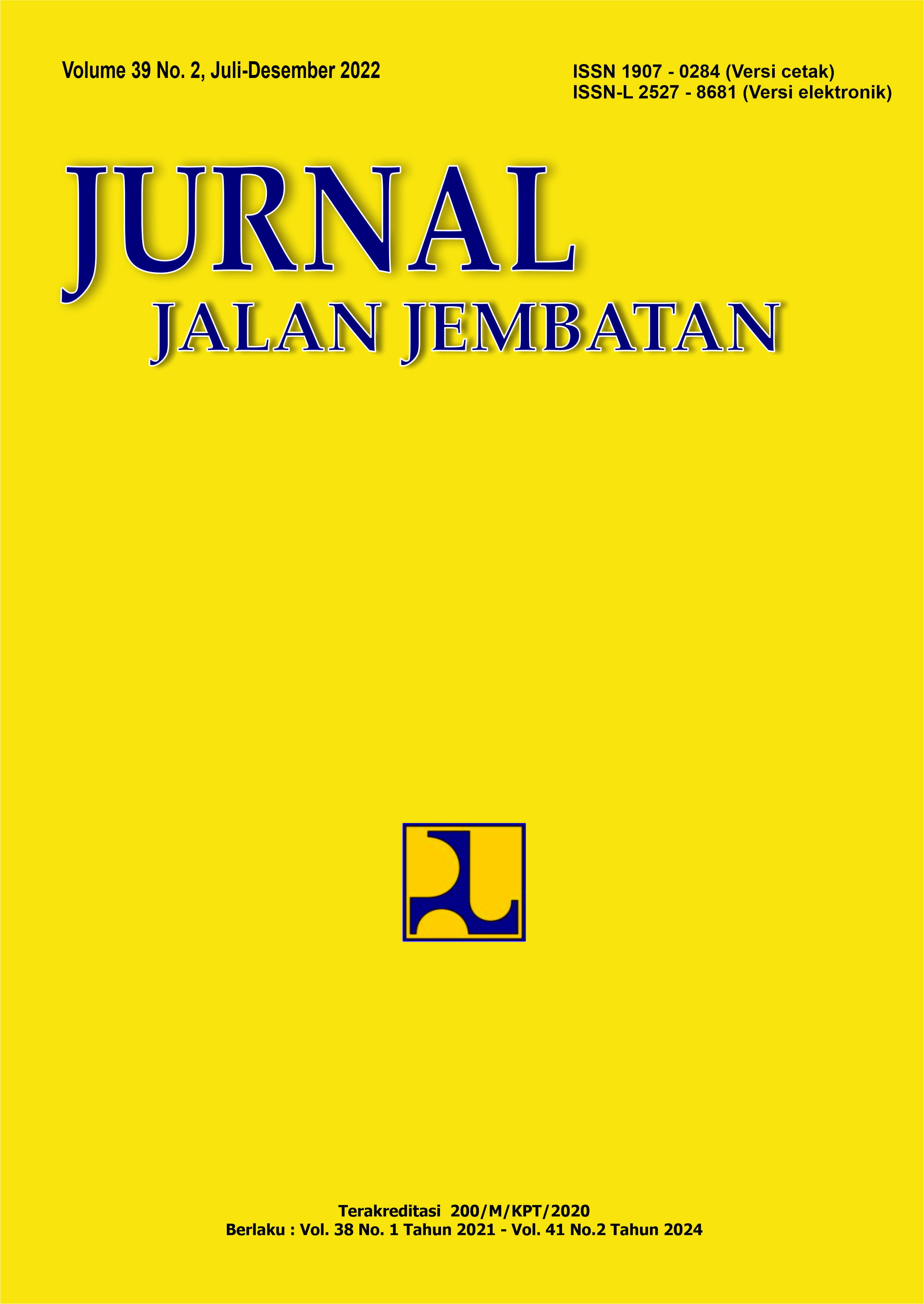RISK IDENTIFICATION IN ROAD LANDSLIDE MANAGEMENT PROJECTS IN INDONESIA WITH HOR (HOUSE OF RISK) METHOD
Main Article Content
Abstract
The implementation of the road slope landslide handling project, of course, there are many potential risks that occur. So that a risk management analysis is needed to anticipate the risks that occur. The purpose of this study was to identify risk events, risk factors and preventive measures in road slope landslide management projects in Indonesia. This research methodology uses questionnaires to experts in the field of road slope landslide handling projects in Indonesia with the House Of Risk (HOR) method and Delphi validation. There are 44 risk event variables, 36 risk factors and 24 preventive measures in this study. At the HOR phase 1 stage there are 22 priority risk factors from the original 36 risk factor variables. In HOR phase 2 and with the Pareto system, there are 13 priority precautions that need to be taken to prevent failures in handling road slope landslides. Through this research, preventive measures in anticipating risk factors in construction projects for handling road slope landslides in Indonesia are to tighten the qualifications of service providers during auctions, confirm contracted personnel have expertise and have internal supervision from the owner of service providers and supervisory consultants.
Keywords:risk identification, risk factors, risk events, risk management, landslide.
Article Details
Authors who publish in this journal agree to the following terms:
-
Authors retain copyright and grant the journal the right of first publication with the work simultaneously licensed under a Creative Commons Attribution License, which allows others to share the work with acknowledgment of the work's authorship and initial publication in this journal.
-
Authors may enter into additional contractual arrangements for the non-exclusive distribution of the journal's published version of the work (e.g., post it to an institutional repository or publish it in a book), with acknowledgment of its initial publication in this journal.
-
Authors are permitted and encouraged to post their work online (e.g., in institutional repositories or on their website) as it can lead to productive exchanges, as well as earlier and greater citation of the published work.
Each submitted manuscript must be accompanied by a "Manuscript Originality Statement" and a "Copyright Transfer Statement".

